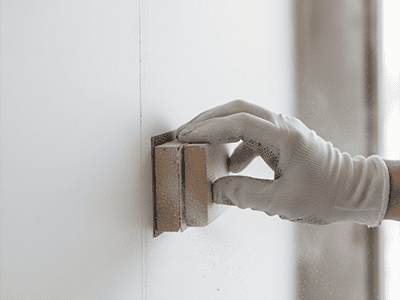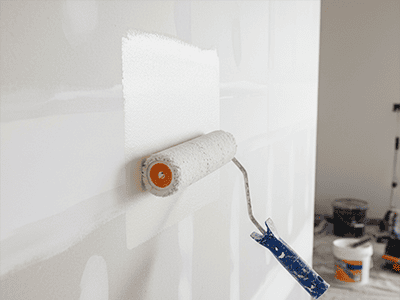How to Paint New Plasterboard (Gyprock)
The Essential Guide to a Professional Finish
You’ve just finished renovating or building, and you’re faced with a room full of fresh, new plasterboard (widely known in Australia by the brand name Gyprock). It looks clean, smooth, and ready for paint. It can be incredibly tempting to just grab a roller and start applying your chosen wall colour straight away. This is, without a doubt, one of the biggest and most costly mistakes a DIYer can make. New plasterboard is a highly porous and inconsistent surface that requires a specific sealing process to ensure a beautiful, uniform, and long-lasting paint finish.
Why You Can't Paint Directly Onto New Gyprock
A new plasterboard wall isn't one single surface. It's a composite of two very different materials:
- The Paper Surface: The face of the plasterboard is covered in a sheet of absorbent paper.
- The Plaster Base Coat/Joint Compound: The joins between the boards and the screw or nail holes are covered with a plaster-based joint compound, which is even more porous and absorbent than the paper.
If you apply your topcoat directly, these two surfaces will soak up the paint at different rates. The joint compound will suck the moisture and binders out of the paint, leaving a dull, chalky, and lifeless patch. The paper will absorb it differently, resulting in a shiny, uneven patch. This effect, known as "flashing" or "sheen banding," will leave your walls with visible stripes and blotches, no matter how many coats you apply.
Step 1: The Final Surface Prep
Before you even think about sealing, your new plasterboard needs to be perfectly smooth. The plastering professional should have left it this way, but it’s crucial to double-check.

- Check for Smoothness: Run your hand over all the plastered joins and screw heads. They should feel perfectly smooth and flush with the paper surface.
- Spot Sand if Necessary: If you feel any ridges or rough spots, give them a very light sand with a fine-grit (180 or 220-grit) sandpaper on a sanding block. Be careful not to sand too aggressively, as you can easily scuff the paper surface of the board.
- Wipe Down All Dust: This is essential. The sanding process creates a huge amount of fine, white dust. Use a soft broom or a vacuum with a brush attachment to remove the bulk of it, then wipe down every single wall and ceiling surface with a damp microfibre cloth or a tack cloth to remove the rest.
Step 2: Apply a Dedicated Plasterboard Sealer
This is the single most important step. You are not priming; you are sealing. You must use a product specifically designed for new plasterboard.

- Choose the Right Product: Go to your local paint shop and ask for a "plasterboard sealer" or "gyprock sealer." Every major Australian paint brand (Dulux, Taubmans, Haymes) has a specific product for this. It’s a 100% acrylic sealer designed to penetrate both the paper and the plaster, equalising the porosity and creating a single, uniform surface for your topcoats to adhere to.
- Do Not Use a "Paint and Primer in One": These products are not suitable for this task. They do not have the specific properties required to properly seal the raw surfaces.
- Apply One Full, Even Coat: Cut in around the edges with a brush, then use a roller with a 10-12mm nap to apply one generous, even coat of the sealer to all new plasterboard walls and ceilings.
Step 3: Apply Your Topcoats
Once the sealer is completely dry (check the can for recoat times), your wall is finally ready for its colour. You will now find that your topcoats apply more easily, go further, and dry to a beautiful, even, and consistent sheen from top to bottom. Simply apply two coats of your chosen wall paint as you normally would, and you'll be rewarded with a truly professional finish.
Pro Tip from a Sydney Painter
For any new build or renovation project, using a dedicated plasterboard sealer is a non-negotiable, foundational step for a professional painter. It guarantees the final result will be flawless, without any risk of sheen banding. On large-scale projects, we use professional airless sprayers to apply the sealer quickly and evenly, ensuring a perfect base. At DRJ Painting, we understand that a premium finish is built on a perfectly prepared foundation, and for new gyprock, that foundation is always a high-quality sealer.

